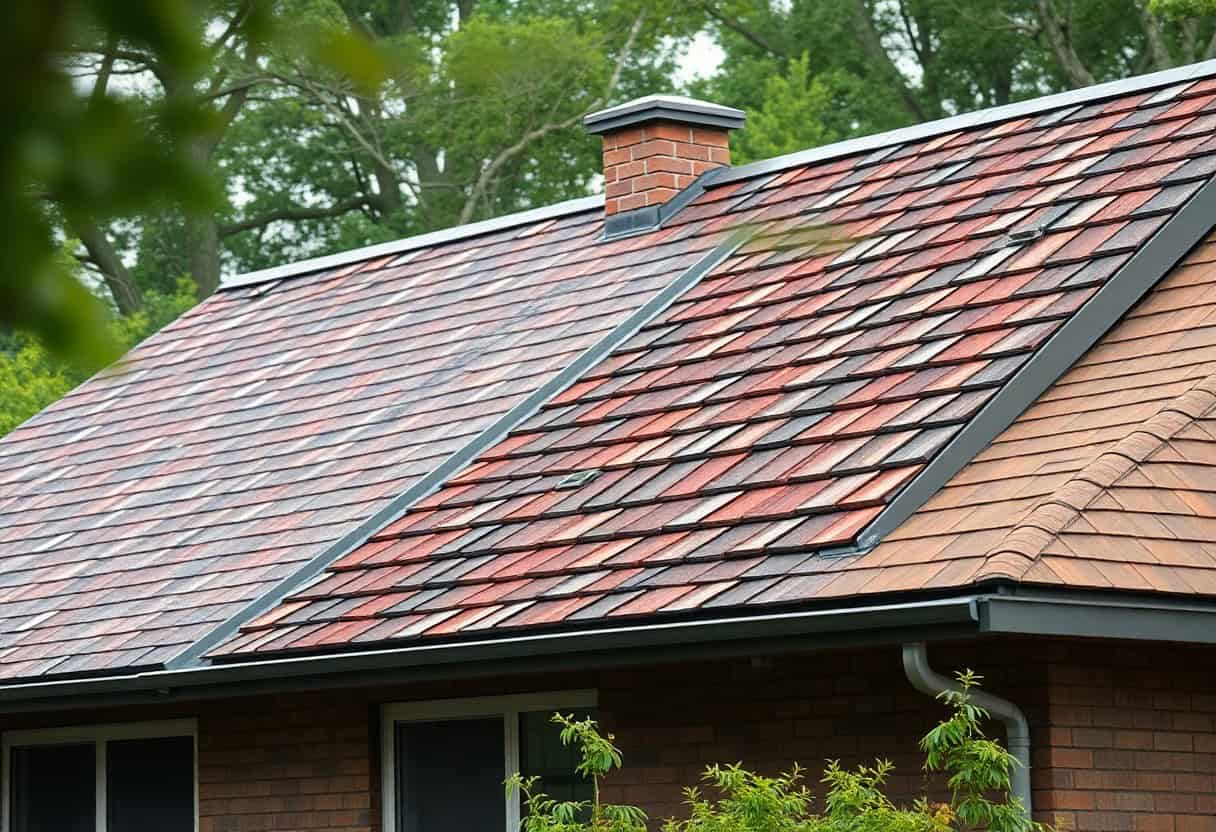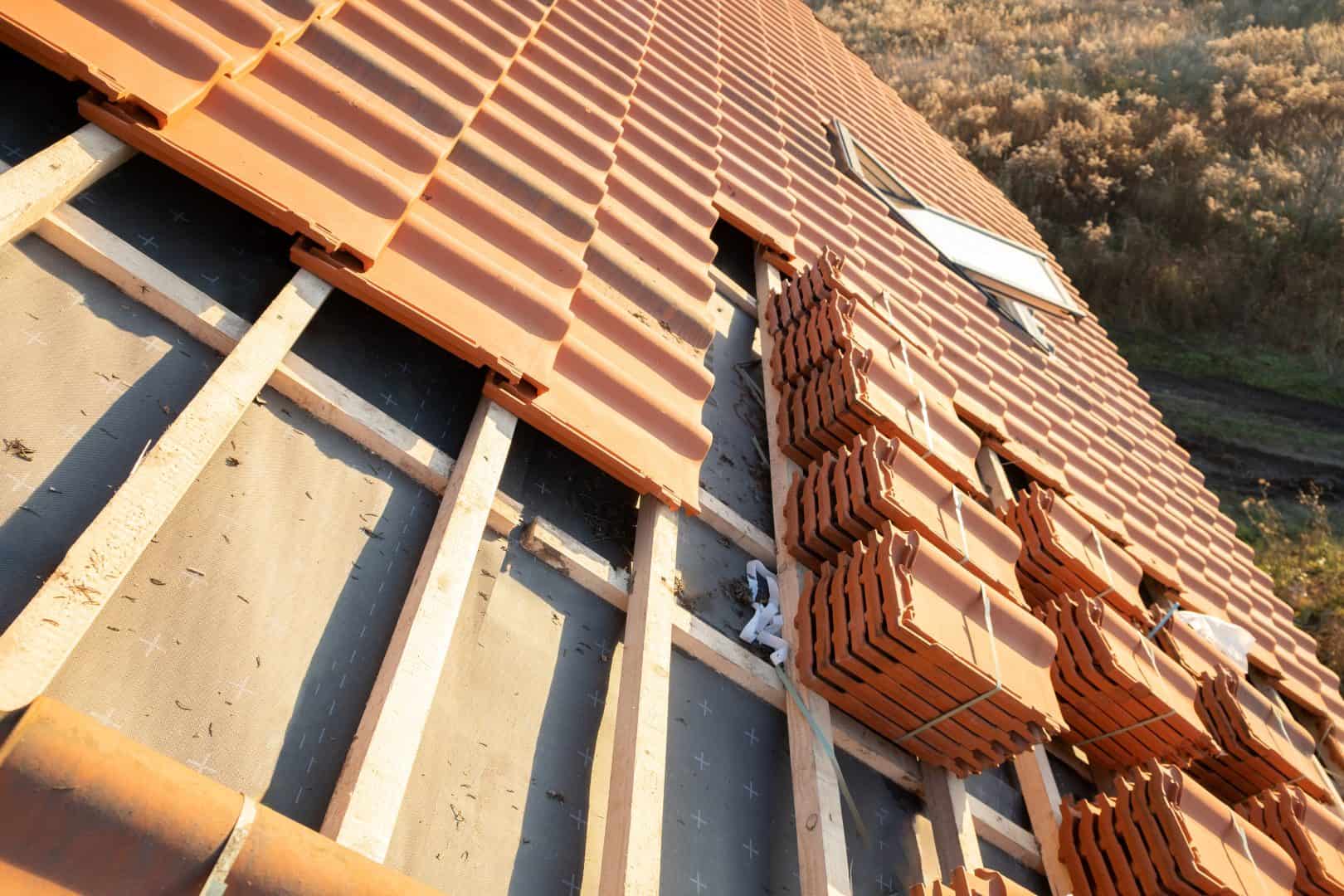What type of roofing material is best for my home?
Fill Out The Form And We'll Get Back To You

Material selection for your roof can significantly impact the aesthetic and functional aspects of your home. With a variety of options available, including asphalt shingles, tiles, metal, and slate, it can be overwhelming to determine which is right for your property. Each type of roofing material offers different advantages in terms of durability, cost, and energy efficiency. In this post, you will discover the necessary factors to consider when choosing the best roofing material to suit your specific needs and enhance your home’s overall value.
Key Takeaways:
- Climate Consideration: The best roofing material depends largely on your local climate; materials should be chosen based on their ability to withstand local weather conditions.
- Durability and Longevity: Opt for materials like metal or slate if you desire a roof that lasts longer and requires less maintenance, ensuring better value over time.
- Energy Efficiency: Look for roofing materials that offer good insulation properties, as these can help reduce energy costs and improve the comfort of your home.
Types of Roofing Materials
The choice of roofing material can greatly influence the aesthetic, durability, and energy efficiency of your home. Here’s a breakdown of some popular options:
| Material | Features |
| Asphalt Shingles | Cost-effective, versatile, and easy to install |
| Metal Roofing | Durable, lightweight, and energy-efficient |
| Wood Shingles and Shakes | Natural appearance and good insulation |
| Clay and Concrete Tiles | Long-lasting, fire-resistant, and great visual appeal |
| Slate Roofing | Luxurious, highly durable, and weather-resistant |
The selection of roofing materials is a significant aspect of your home design.
Asphalt Shingles
Types of asphalt shingles come in various styles and colours, making them suitable for different home designs. They are relatively affordable and provide decent protection against the elements.
Metal Roofing
By opting for metal roofing, you gain a material renowned for its longevity and resistance to harsh weather conditions. It’s lightweight and can reflect heat, boosting your home’s energy efficiency.
Another advantage of metal roofing is its ability to withstand strong winds, making it an ideal choice in storm-prone areas. Additionally, it is available in an array of styles and colours, allowing for stylish and functional options.
Wood Shingles and Shakes
Along with providing natural beauty, wood shingles and shakes offer excellent insulation. They can be a statement choice for homeowners seeking a rustic or traditional look.
It is important to consider that wood roofing materials require regular maintenance to prevent decay and damage from pests. However, when properly cared for, they can enhance your home’s curb appeal significantly.
Clay and Concrete Tiles
Roofing made from clay and concrete tiles is not only aesthetically pleasing but also highly durable. These materials are effective in preserving energy and can withstand extreme weather conditions.
But keep in mind that clay and concrete tiles can be heavier than other materials, so your home’s structure may need to be assessed before installation. They also require professional installation to ensure a proper fit and performance.
Slate Roofing
On the luxury end of the spectrum, slate roofing provides an elegant appearance and remarkable durability. This natural stone material is incredibly resistant to fire and extreme weather.
In addition to its beauty, slate roofing can last over a century with proper maintenance. However, it is more expensive and may require additional structural support due to its weight, which you should consider when deciding on your roofing options.
Factors to Consider When Choosing Roofing Materials
Your choice of roofing material should be informed by several key factors that can significantly impact the performance and longevity of your roof. Consider the following:
- Local climate and weather conditions
- Durability and lifespan of materials
- Maintenance requirements
- Aesthetic appeal and style
- Cost and budget
Any of these factors can sway your decision, making it imperative to evaluate each carefully.
Climate and Weather Conditions
Around the UK, varying weather patterns mean that the roofing materials you choose must be suitable for local conditions. For instance, areas prone to heavy rainfall may benefit from water-resistant materials, while regions with heavy snow loads will require sturdier options that can withstand the weight.
Durability and Lifespan
Roofing materials vary widely in their durability and expected lifespan, which are critical factors. Selecting a material with a longer lifespan can result in lower long-term costs and less frequent replacements.
Weather-resistant materials, such as slate or metal, can offer decades of service, while others, like asphalt shingles, typically last around 20-30 years. Consider the potential for wear and tear based on your local environment to make a wise choice that aligns with your expectations.
Maintenance Requirements
The maintenance requirements of roofing materials are imperative to consider when making your choice. Some materials may require more frequent upkeep and inspections than others.
Maintenance often encompasses cleaning, repairing, and replacing components as necessary. Materials like tile or metal roofs tend to demand less maintenance over time, while wood shingles might require more regular attention to prevent decay and damage from pests.
Aesthetic Appeal
To ensure your home complements its surroundings, consider the aesthetic appeal of your chosen roofing material. The roof is a significant component of your home’s exterior appearance and can enhance its curb appeal.
Choosing a style that matches the architecture of your home can create a unified look. Whether you prefer the rustic charm of shingles or the sleek finish of metal roofing, consider how the material fits in with the overall design of your property.
Cost and Budget
An imperative factor in your decision-making process is the cost and budget for your roofing project. Different materials come with varying price tags that can significantly impact your overall expenditure.
Hence, it’s important to assess not only the initial cost of materials but also the long-term costs associated with maintenance, lifespan, and potential repairs. Balancing your preferences with budget constraints will help you make a well-informed decision that meets your financial considerations.
Environmental Impact of Roofing Materials
Once again, the choice of roofing materials can significantly affect your home’s environmental footprint. Different materials have varying levels of sustainability and energy consumption during manufacturing and installation. Opting for eco-friendly options can help reduce waste and promote recycling, thereby contributing positively to the environment. Investing in materials with a longer lifespan can also minimise the need for replacements, reducing the overall ecological impact.
Sustainability Considerations
Roofing materials play a vital role in enhancing the sustainability of your home. When choosing your roofing, consider options that are sourced responsibly and offer longevity. Recyclable materials, such as metal or slate, can be more sustainable choices, as they minimise landfill waste. Additionally, verify the manufacturer’s commitment to eco-friendly practices in their production and distribution processes.
Energy Efficiency
One of the key benefits of your roofing material is its potential for energy efficiency. Choosing materials that reflect sunlight, such as light-coloured tiles or metal, can help keep your home cooler in hotter climates, reducing reliance on air conditioning. Similarly, insulated roofing options, like concrete tiles, can improve heat retention in colder months, contributing to lower energy bills.
In addition, energy-efficient roofing not only reduces your energy consumption but can also enhance your home’s comfort throughout the year. Proper insulation can work in tandem with suitable roofing materials, creating a barrier that keeps your home warm in winter and cool in summer. Coupling these materials with ventilation systems will ensure optimal air flow, further improving energy efficiency and creating a more pleasant living environment.
Comparing Costs of Different Roofing Materials
Not all roofing materials are created equal when it comes to cost. Understanding these differences is vital for making an informed decision. The table below outlines various roofing materials alongside their estimated costs, helping you to evaluate what fits your budget.
| Roofing Material | Average Cost per Square Meter |
|---|---|
| Asphalt Shingles | £50 – £70 |
| Metal Roofing | £80 – £120 |
| Slate Tiles | £90 – £150 |
| Clay Tiles | £100 – £200 |
| Wood Shakes | £100 – £150 |
Initial Installation Costs
Above all, the initial installation costs of your roofing material will significantly impact your overall budget. While asphalt shingles tend to be the most affordable option at the outset, investing in premium materials, like slate or clay tiles, can lead to higher upfront expenses. However, consider your long-term priorities when evaluating these costs.
Long-term Value and ROI
Below the surface of installation costs lies the potential for long-term value and return on investment (ROI) of your chosen roofing material. The longevity and durability of a roof can greatly influence its overall value over time.
Understanding the long-term value and ROI of your roofing material is vital for making a wise investment. While a lower-cost option might seem appealing initially, consider how often you may need to replace or repair it. Premium materials like metal or slate, though more expensive upfront, often last decades longer than cheaper alternatives, leading to savings down the line and potentially increasing your property’s value. Ultimately, investing in a durable roofing solution could reward you with a significant return when it comes time to sell your home.
Popular Roofing Options by Region
To determine the best roofing material for your home, it’s necessary to consider your regional preferences. Different areas often favour certain materials based on local availability and climate. For more insights, check out 4 Best Types Of Roofing Materials (2024 Guide) to understand which materials thrive where you live.
Urban vs. Rural Preferences
Options for roofing vary significantly between urban and rural settings. Urban areas may prefer modern materials like metal or flat roofs for their sleek aesthetics and durability, while rural regions often opt for traditional choices like timber shakes or clay tiles that harmonise with the natural landscape.
Regional Climate Impacts on Material Choice
Impacts of regional climates play a significant role in your roofing material choice. For example, coastal regions may benefit from materials resistant to salt and moisture, whereas areas with heavy snowfall should consider roofs that can bear the weight and prevent ice damming.
In fact, selecting roofing materials according to your regional climate not only enhances longevity but also ensures optimum performance. Hot climates may require reflective materials to keep your home cool, while those in temperate regions should look for options that offer insulation benefits. Always assess local weather patterns and conditions to make the most informed decision for your home.
Tips for Choosing the Right Roofing Material
Many factors influence your choice of roofing material. Consider these tips to guide your selection:
- Assess the climate in your area.
- Evaluate the longevity and maintenance of each material.
- Think about the architectural style of your home.
- Review your budget and long-term costs.
After weighing these aspects, you may find it helpful to explore What Is the Best Type of Roof? (2024) for further insights.
Consulting with Professionals
Behind every successful roofing project is expert advice. Engaging with professionals can provide clarity regarding the best materials for your specific needs. Roofers or architects can offer insights into the pros and cons of various options, ensuring that you make an informed decision.
Researching Local Regulations and Building Codes
To ensure compliance, it’s crucial to understand local regulations and building codes pertaining to roofing materials. Each area may have different requirements, which can affect your choices and overall project timelines.
Also, local regulations often dictate the types of materials you can use based on environmental considerations or historical preservation standards. Checking with your local council or building authority can help you avoid potential legal issues and ensure your roofing project meets all safety guidelines.
Conclusion
With these considerations in mind, choosing the best roofing material for your home ultimately depends on your specific needs, budget, and aesthetic preferences. You should evaluate factors such as durability, maintenance requirements, energy efficiency, and local climate conditions. Options range from traditional tiles and slates to modern metal and synthetic materials, each offering unique benefits. By carefully assessing your priorities, you can make an informed decision that enhances your property’s value and longevity.
FAQ
Q: What factors should I consider when choosing roofing material for my home?
A: When choosing roofing material, you should consider several factors including the climate in your area, the architectural style of your home, your budget, and the longevity of the material. Different materials have varying levels of durability, insulation properties, and aesthetic appeal. For instance, if you live in a region prone to heavy snowfall, you might opt for a material that can withstand such conditions, while warmer climates may benefit from materials that reflect heat.
Q: How do different roofing materials compare in terms of lifespan?
A: The lifespan of roofing materials can vary significantly. For example, asphalt shingles typically last around 15 to 30 years, whereas metal roofing can last 40 to 70 years. Slate and tile roofs can exceed 100 years with proper maintenance. It’s vital to weigh the initial cost against the expected lifespan, as investing in a more expensive material with a longer lifespan may provide better value over time.
Q: Are there eco-friendly roofing options available?
A: Yes, there are numerous eco-friendly roofing options to consider. Materials such as clay tiles, slate, and metal are not only durable but also recyclable. Additionally, green roofs, which incorporate vegetation, can provide excellent insulation and improve air quality. These options can reduce your environmental footprint while enhancing the overall aesthetic of your home.
Re-Roofing of House
The guys made a fantastic job of replacing the roof recently. They were fast, relaible and efficient. The work was carried out in a double-quick time.
Fascias and Soffits
We employed Wrights Roofs to replace the fascias, soffits and gutters that had been on the house since it was new. They carefully removed and replaced it all. Really impressed.
New Roof
We had an extension built and Wrights came and put a new roof on. They were excellent, no fuss, great value for money. Thank you.
Roofs, Flat Roofs Chimneys and Solar Panels
If you need roof work on your home, please complete the form or call us today.

